After all these cars, am I still a car guy?
Posted on Feb 23, 2020 in Featured | 2 comments
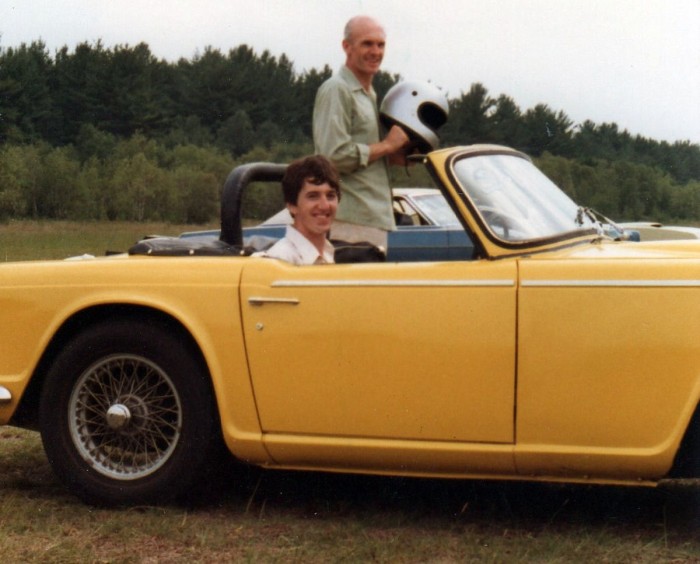
Me and my father with the 1968 Triumph TR-250, at a “high-speed” auto-cross run on an abandoned runway in 1979 at Orange Airport, Massachusetts. I think I won my class that day. All photos courtesy of the author.
[Editor’s Note: Reader Peter Doherty, Jr. recently wrote in with his story of cars loved and lost and races won and lost, all to ponder what it really means to be a car guy.]

Me (foreground) and my childhood best friend, Danny, playing with a Tyco HO slot-car race set (Cheetah vs. Mako Shark) in 1970. The later Aurora AF/X sets were the best.
Lately I have been wondering if I can still call myself a car enthusiast. I certainly grew up a car guy (kid) in the late 1960s. I was the one in the family who could identify all the neighbors by make and model of car. I had an extensive collection of die-cast toy cars and several slot car sets (I skipped school to play with one birthday present). I distinctly recall my first ride in a sports car (light blue MGB). I remember getting a high speed run around Lime Rock with a family friend in his ’69 Corvette. At age 14, I was trusted to move the family cars in and out of the garage by myself (mom never saw the time I almost put her Maverick through the roll-up door). I got my license the day I turned 16, and immediately started saving for a car of my own. I read Road & Track cover to cover for specs on current cars, and skimmed Automobile Quarterly for stories about machines of the past. I learned to drive a stick shift by trading use of dad’s moped (a legacy of the 1973 oil embargo) for access to a three-speed Chevy Vega, which a schoolmate had.

Me (left) with my friend, Tony, at Lime Rock in 1972. I don’t know what is cooler: that beautiful McLaren M1B, or my striped bell-bottoms and my Mustang windbreaker.
The week after high school graduation, I found a one-owner, 10-year old Triumph TR-250 (rusty, but otherwise sound) in the newspaper classifieds for $750. I knew nothing about fixing cars, but soon learned, working with my father, doing the bodywork in our garage. We didn’t have much money and had to borrow most of the equipment to do the job, but it came out looking pretty good. I certainly thought that bright yellow roadster was the greatest thing ever. I put on my leather driving gloves, and attacked any twisty back road I could find in Connecticut, where I lived, and in rural Pennsylvania, where I went to college. I started auto-crossing at the end of my sophomore year. After several cone-scattering runs and lurid spin-outs, I realized I didn’t know much about driving, either (keeping your foot in it and trying to “steer faster” doesn’t end very well). I learned quickly though, and promptly sold the TR (for $3,500) to get a newish, ’78 Fiat X1/9, better suited to the task. I exchanged my Triumph belt buckle for an Abarth ball cap. Every weekend from then on, my father and I were at an autocross, time-trial, or hill-climb (with only 62 horsepower!) somewhere in the Northeast. I became so hooked on the scene, that I dropped out of college and took a job at an auto parts store in order to keep the “endless summer” going. I learned a lot about engine tuning, car handling, and high-performance driving (and about my father) over what turned into two of the best years of my life. I had to be a car guy at this point, right? But I wanted more.
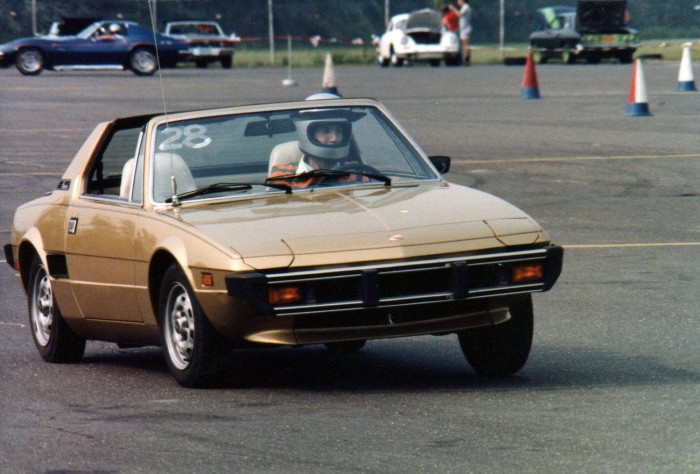
Auto-crossing the 1978 Fiat X1/9 at the former Package Machinery Co. in E. Longmeadow, Massachusetts, in 1980. The nimble little car was in its element in these kinds of events.
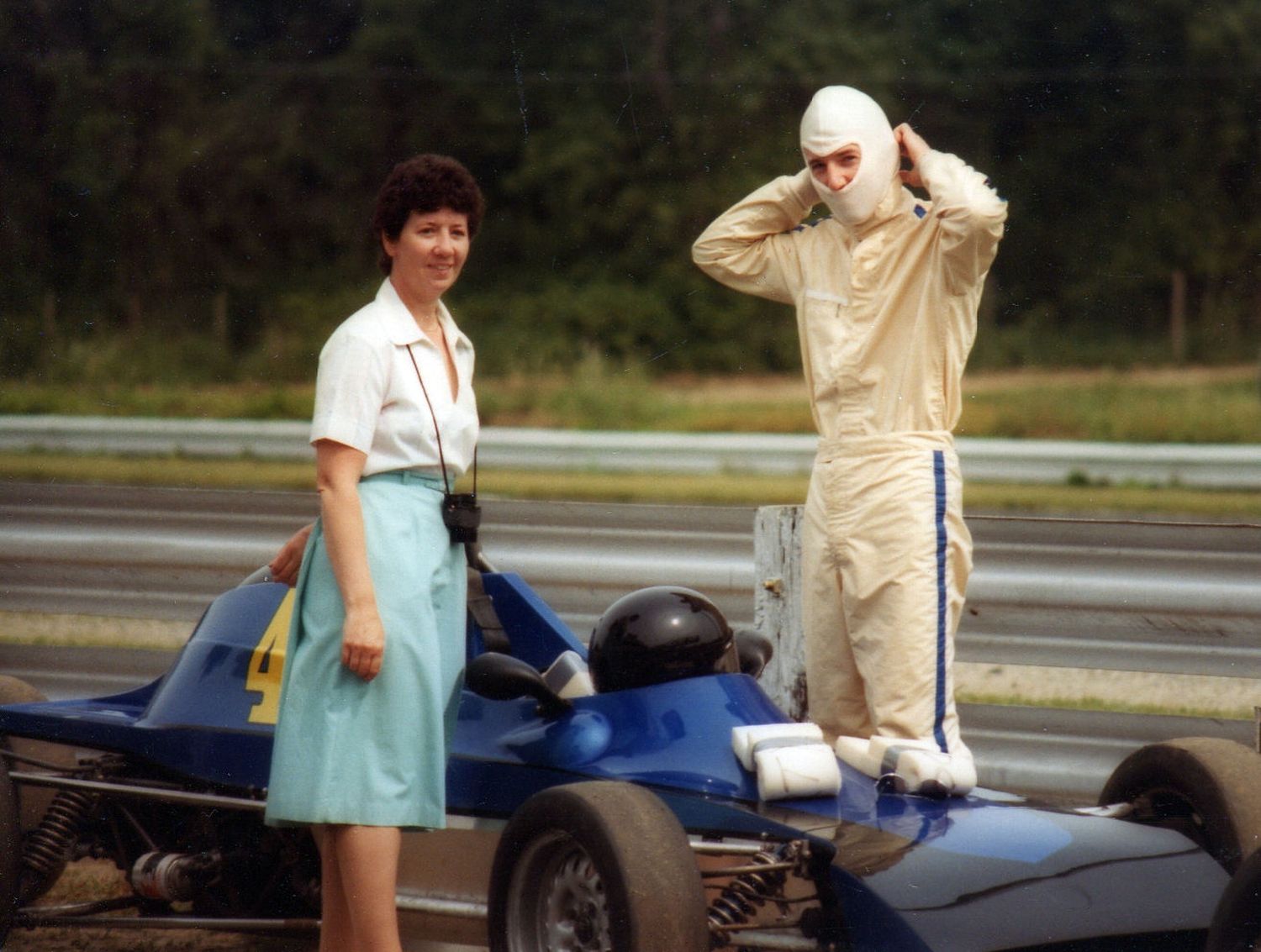
Suiting up (with mom) to race a Crosslé 32/35F Formula Ford in the Skip Barber Racing School Race Series at Lime Rock in 1982. Mom had a good time sitting in the stands chatting (and knitting!) with the wives and girlfriends of the other racers. Dad was a volunteer corner worker. We got an award at the end-of-year banquet: “The Family That Races Together, Stays Together.”
I answered an ad in On Track magazine for a mechanic position with one of the racing schools. I wasn’t so interested in the wrenching part; what caught my attention was that half the pay would be in the form of race school tuition – and several races in the school’s formula Ford racing series. Next stop: Formula One. I sold the Fiat and headed for Sebring, where the operation headquartered for the winter. I did the three-day racing school, and as a fringe benefit, experienced the IMSA 12-hour endurance race from the pits (the John Pauls won in a Porsche). Those were the highlights of the job. It might have been changing 10 cars’ worth of brake pads in the rain by flashlight at Hallett, or maybe when my partner wanted a little toke on the interstate somewhere, or perhaps when the car hauler got stuck (twice) in a spring blizzard on the way to Mid-Ohio, that I realized I didn’t want to be a race mechanic anymore. I quit, and got a job as a lot attendant with a used car dealer near my hometown, so I could compete in the entire race series. At the end of the 15 races, I had no money left and a record of mostly mid-field finishes (plus two crashes). Spending money you don’t have is typical car guy behavior, right? I returned to college (at a much cheaper state school) and tried not to think of the Andrettis and Unsers of my generation out on the track, while I sat in the classroom. Mom was happy anyway.
After graduation, I was fortunate to get a chance to travel to Europe for six weeks. I saw the usual sights, but kept detouring to car museums and famous race tracks. I visited the Schlumpf Museum (lots of Bugattis), and took the rental car around the Nurburgring (lots of fun – until the brakes faded). When I got back to the States, I jumped in the family’s old ’73 Mercury Marquis and headed West, ostensibly looking for work. I saw many iconic U.S. landmarks (and put many quarts of oil in the Merc’s tired 429) on what ultimately became a 9,000-mile round trip. I eventually joined the Air Force, and bought my first new car on my second lieutenant’s paycheck: a 1986 Mazda RX-7. I attempted a return to auto-crossing with it, but the thrill was gone. It just wasn’t the same as wheel-to-wheel racing in a real race car. I probably should have kept the “rotary rocket” as strictly a street car, but I sold it within the year (and learned what the term “upside down” meant). Being stationed in California meant there were plenty of cheap, but clean used cars around. I picked up a ’77 Chevy Monte Carlo and forgot about fun cars for a couple of years. Although, I did rent a Magnum PI look-a-like, Ferrari 308 GTS while on temporary duty in Hawaii. And, I did stop in at Fantasy Junction, near San Francisco, and fantasized over their inventory of collector cars. I was finally tempted back in the game by a brand new, 1990 Toyota Supra (from a plain old Toyota dealer). The Supra was a solid and comfortable GT car, which I probably drove a bit too hard at times, but you sure could cover some ground with it. I traveled all over Northern California, including to Pebble Beach for the concours (saw Fangio, Moss, and Hill at the same table). After my military hitch was up, I took the Supra down to grad school in Texas, where I once had it on cruise control at 100 MPH for an hour (and I wasn’t the only one going that fast). Real car guys like to drive, right?
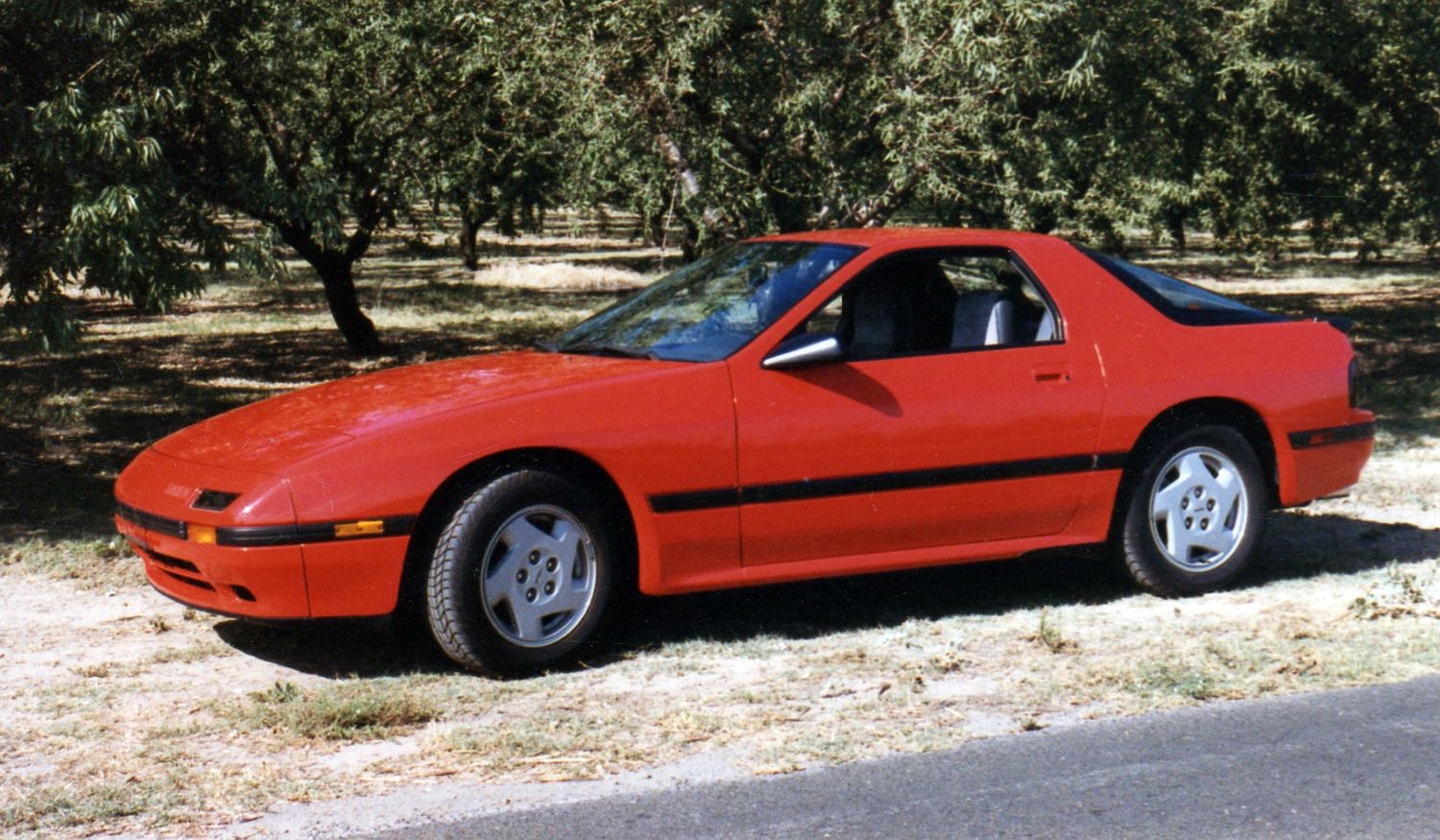
1986 Mazda RX7
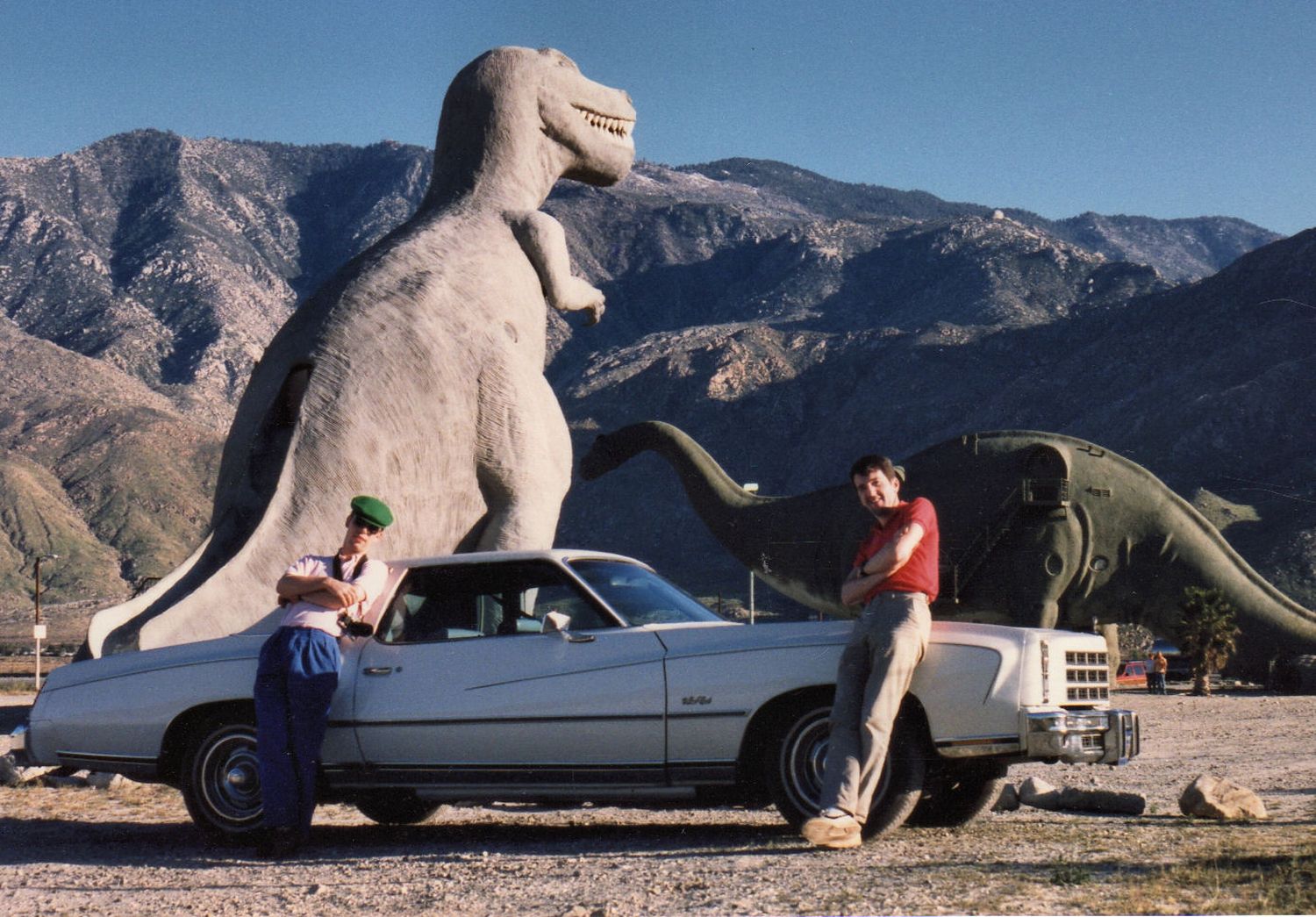
1977 Chevrolet Monte Carlo
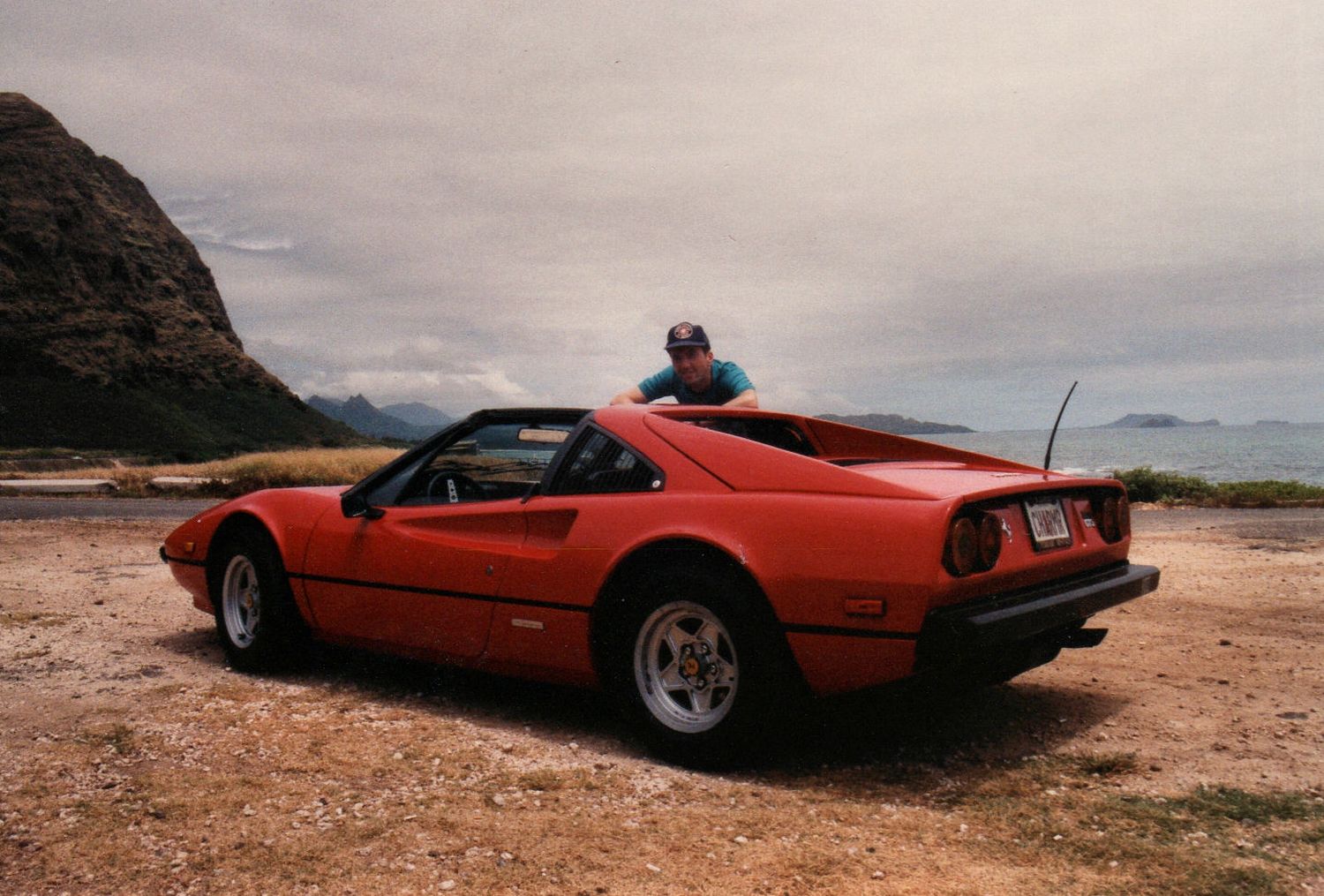
’80s Ferrari 308GTS in Hawaii

1990 Toyota Supra
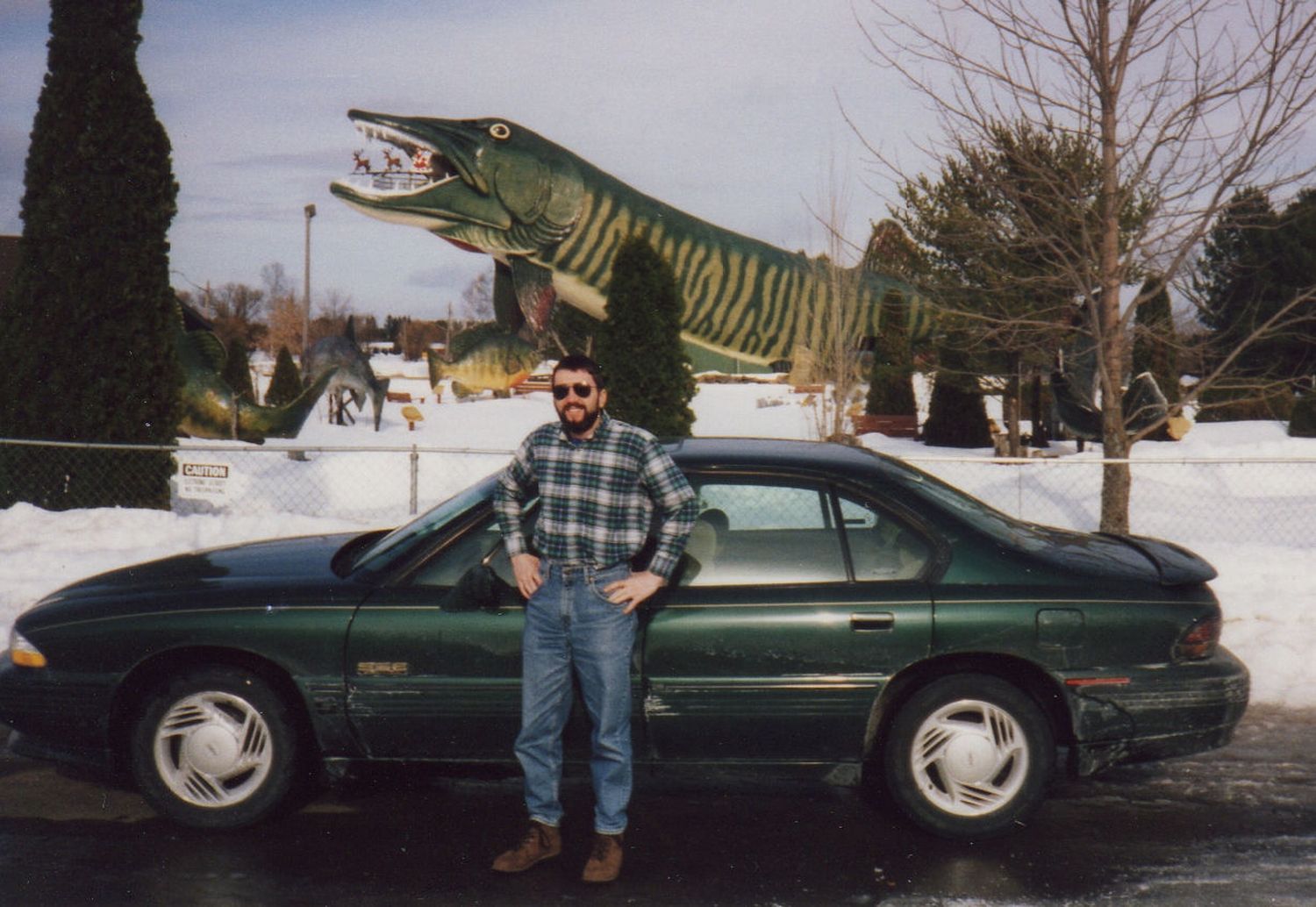
1993 Pontiac Bonneville SSE
The Supra made way for an off-lease ’93 Pontiac Bonneville SSE (great engine, ugly body cladding) with ABS and traction control, features I would need when I took a marketing job in snowy Green Bay. During this period in the mid ’90s I (and many others) became huge Indy Car fans. The Midwest was a great place to go to an Indy Car race, with several tracks in close proximity, most of which I visited. Road America was my favorite circuit to see high-horsepower machines turned loose (also enjoyed the Can-Am 30-year celebration there in ’96). That same year, I went to the Indy 500, and witnessed a brave ride to victory by Buddy Lazier (racing with a broken back). Most car guys watch a lot of motorsports, don’t they?
Just like that, I got downsized from the corporate world, and took the first temporary job I could find: selling cars. That temporary job lasted five years and eventually encompassed selling Toyota, Saturn, Ford, and Lexus vehicles (now I was the one telling people they were upside down). I made a small reputation as a salesman; an honest guy who listened to the customer, and knew something about his product. I’d like to have tried my hand at selling Porsches or Ferraris, but sometime after I returned to Connecticut, I shifted gears and went off in a more creative (and less profitable) direction. But what could be more car guy than actually selling cars, right?
So, now that I have reached that stage in life where I have enough time and money to indulge an interest in things automotive, why am I driving anonymous mid-size sedans? Is it because I can park them anywhere and walk away without worry, and also know that I’ll never have to open the hood for the three years of the lease? Why am I not looking for another Triumph, or similar vintage ride for a second car? Is it because I know I will probably be disappointed in the driving experience compared to modern cars (and a nice TR-250 goes for $30K)? Why then, do I not go out and buy a new Corvette or Cayman – “affordable” cars that are faster and better machines than almost anything produced over the last 50 years? Is it because it seems crazy to me to buy a vehicle that can’t be driven for five months of the year because of snow and ice (and salt) on the roads? And why do I rarely take weekend road trips anymore, and never exceed the speed limits when I do go somewhere? Is it because our New England roads are overcrowded (and potholed), with speed traps seemingly around every corner? Is it because if I buy a sports car and take it on the track to avoid the law, it suddenly seems too heavy, soft, and slow? Why then, am I not a regular competitor in a racing school formula car race series? Is it that I can’t justify the expense when it’s no longer a step towards a potential career? Speaking of racing, why do I click right past the few road races still shown on television (remember Speed)? Is it because there is very little actual racing going on, and too many sanitized, “Mickey Mouse” type tracks these days (with even fewer personalities left behind the wheel)?
So, with such a long list of sorry excuses, can I still honestly call myself a car guy? Is reading the Hemmings blog every day enough to maintain my status? [Editor’s note: Do you need to ask?] I am planning to go to Lime Rock this Labor Day (with my now, 80-year-old father) to see Stirling Moss and his Mercedes 300 SLR (Dad is British, by the way). I do find some of the reality car shows on cable entertaining (at least for a short while). I have rediscovered old-school racing in the form of Irish motorcycle road racing (200 MPH on public roads!), but that is hard to find even on the Internet. And there is a long, wide, S-shaped connector ramp on my evening commute that I can’t help but straighten out every night.

At the Ulster GP, a motorcycle road race in Northern Ireland, in 2014. Average speed around the 7.4-mile circuit for the Superbikes is over 130 MPH. Bike racing today, like car racing used to be. Here’s a link to a photo slide show I made.
But what the hell happened to me? When I got that Triumph I was sure I would be driving cars like that for the rest of my life. Maybe I thought I was a car guy, when I was really just a wannabe racer all along? Is it simply a mid-life crisis? Is there a pill advertised on TV that I should “ask my doctor” for? Will I be okay again if I win the lottery? Let’s see…I could get that Lamborghini Miura (just to look at), or maybe one of those hot new Alfa 4Cs (for just the right day), or perhaps a big-tailfins-and-chrome boat from the ’50s (just for cruise nights), and of course, one of those no-compromise British track day cars (just for the racer in me). And then I could…





.gif)


” 200 MPH for a street car is just stupid. Give me some personality, some fun – not cornering capability so great that I would have to run an exit ramp at 75 mph to have any sensation.”
This is PRECISELY why almost every car guy on the PLANET agrees that the MAZDA MIATA is quite possibly the greatest driver’s car ever created in the history of cars, period. Hands down. Bar none. If you think it’s a girl car, that means you don’t know JACK about cars. Go drive one. It is the answer to your prayers Not a Harley.
Don’t worry- no Harley here! I agree about the Miata- drove a friend’s and it is great. Economical to commute with too! Hmmmmm.